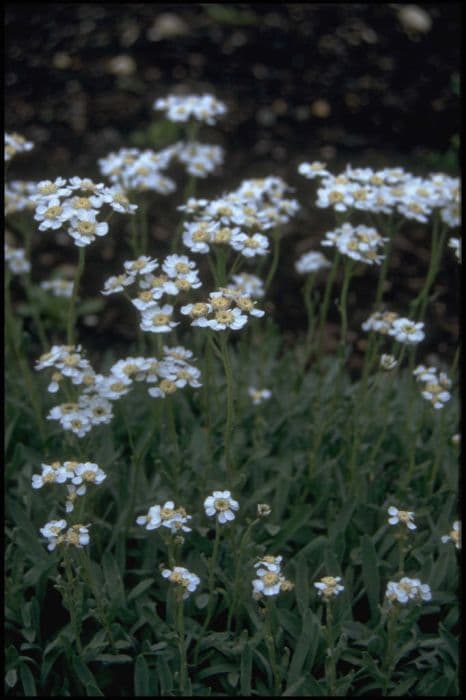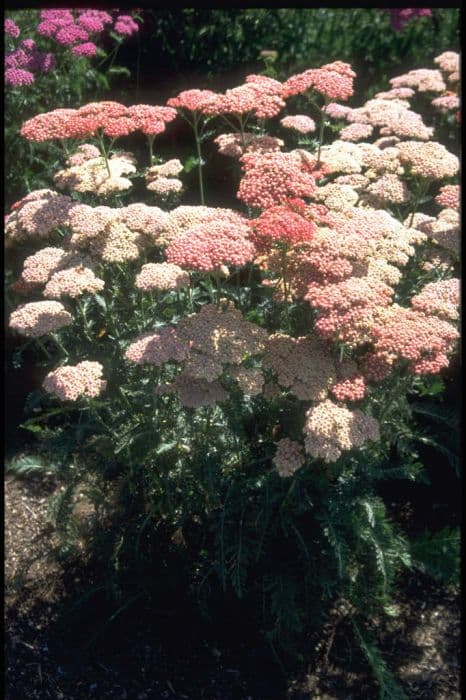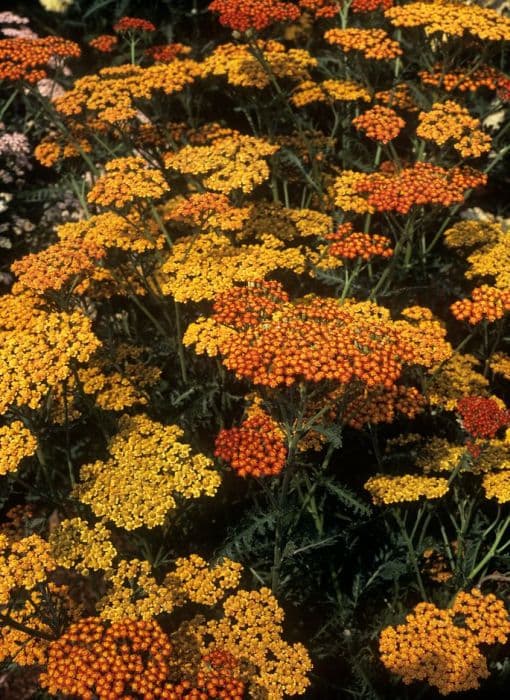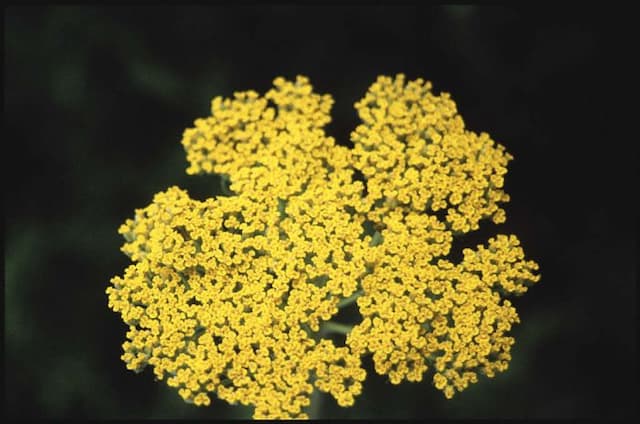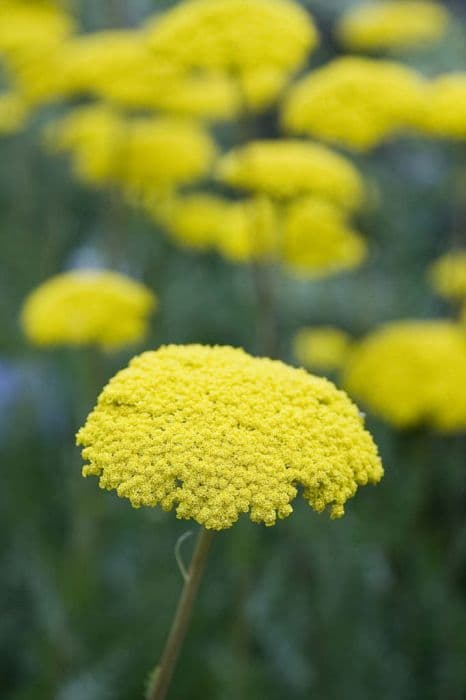Tickseed Coreopsis verticillata 'Grandiflora'

ABOUT
Coreopsis verticillata 'Grandiflora', commonly known as threadleaf coreopsis or whorled coreopsis, is an ornamental plant characterized by its cheerful, bright yellow flowers. The flowers are daisy-like in shape, boasting a ring of flat, serrated petals surrounding a prominent central disc. These blooms are held atop slender, wiry stems that give the plant its airy appearance. The foliage of the threadleaf coreopsis is equally distinctive. It consists of fine, needle-like leaves that are arranged in a whorled pattern, lending a delicate, ferny texture to the overall look of the plant. The green leaves contrast with the golden-yellow flowers, creating an eye-catching display that is often used to brighten up garden beds and borders. The blossoming period of threadleaf coreopsis extends through the summer months, offering a long season of vibrant color and appeal.
About this plant
 Names
NamesSynonyms
Threadleaf Coreopsis, Whorled Tickseed, Grandiflora Tickseed, Needle Tickseed.
Common names
Coreopsis grandiflora.
 Toxicity
ToxicityTo humans
The plant known as Tickseed is not commonly regarded as toxic to humans. There is little to no documented toxicity in Coreopsis verticillata 'Grandiflora' for people, and symptoms of poisoning from ingesting this plant are generally not reported. However, as with any plant, individual allergic reactions or sensitivities could occur, so it is advisable to avoid ingestion and to handle plants with care if you have sensitive skin or known allergies.
To pets
Tickseed is not typically considered toxic to pets. There is limited information suggesting toxicity of Coreopsis verticillata 'Grandiflora' to household animals such as cats and dogs. Ingesting parts of this plant is not known to cause significant symptoms of poisoning in pets. Nevertheless, individual animals might have sensitivities, and consuming non-food plants can sometimes lead to mild digestive upsets. It's always best to prevent pets from eating ornamental plants as a general precaution.
 Characteristics
CharacteristicsLife cycle
Perennials
Foliage type
Deciduous
Color of leaves
Green
Flower color
Yellow
Height
1-2 feet [30-60 cm]
Spread
1-2 feet [30-60 cm]
Plant type
Herb
Hardiness zones
5
Native area
North America
Benefits
 General Benefits
General Benefits- Attracts pollinators: Coreopsis verticillata 'Grandiflora', commonly known as Tickseed, is known for attracting bees, butterflies, and other beneficial insects that are essential for pollination.
- Drought tolerance: Tickseed is highly drought-resistant, making it an excellent choice for water-wise gardens and for gardeners looking to reduce their water usage.
- Low Maintenance: Once established, Tickseed is easy to care for, requiring minimal maintenance, which is ideal for busy gardeners or those preferring low-maintenance landscapes.
- Long blooming period: Tickseed offers a long blooming season from early summer to fall, providing vibrant color in the garden for an extended period.
- Deer resistance: This plant is not a preferred food source for deer, making it an excellent selection for areas where deer browsing can be a problem for gardeners.
- Erosion control: The fibrous root system of Tickseed helps to stabilize soil and control erosion on slopes and banks.
- Versatile plant: Suitable for borders, container gardens, and as a groundcover, Tickseed offers great versatility in garden design and landscaping.
- Cut flowers: The bright blossoms of Tickseed make excellent cut flowers, adding a splash of color to indoor arrangements.
 Medical Properties
Medical PropertiesThis plant is not used for medical purposes.
 Air-purifying Qualities
Air-purifying QualitiesThis plant is not specifically known for air purifying qualities.
 Other Uses
Other Uses- Coreopsis verticillata 'Grandiflora', also known as Tickseed, can be used as a natural dye for fabrics, producing colors from yellow to brown depending on the mordant used.
- Tickseed can serve as a soil stabilizer in areas prone to erosion due to its dense and fibrous root system.
- The long-lasting blooms of Tickseed are ideal for cut flower arrangements, adding bright yellow hues to bouquets and decorative pieces.
- Tickseed plants can be used in xeriscaping, a landscaping method that reduces or eliminates the need for supplemental water from irrigation.
- Dried Tickseed flowers can be incorporated into potpourri mixes for a subtle, natural fragrance and bursts of color.
- Gardeners can use Tickseed in companion planting strategies, as it is believed to attract beneficial insects such as ladybugs and lacewings to the garden.
- Tickseed can be interplanted with vegetables like tomatoes and peppers, potentially improving pollination and therefore crop yield.
- The plant can be used as a natural border to define spaces within a garden due to its clumping habit and visual appeal.
- In educational settings, Tickseed can be used to demonstrate the life cycle of a perennial plant from germination to seed production.
- Tickseed’s vibrant flowers are effective in attracting photographers and nature enthusiasts to gardens, contributing to wildlife and nature tourism.
Interesting Facts
 Feng Shui
Feng ShuiThe Tickseed is not used in Feng Shui practice.
 Zodiac Sign Compitability
Zodiac Sign CompitabilityThe Tickseed is not used in astrology practice.
 Plant Symbolism
Plant Symbolism- Cheerfulness: Coreopsis, commonly known as 'Tickseed', is often associated with cheerfulness because its bright yellow blossoms evoke a sense of joy and sunshine.
- Optimism: The radiant flowers of the Tickseed symbolize optimism and a positive outlook on life, reflecting the plant's ability to thrive in a variety of conditions.
- Love: In some traditions, Tickseed represents being in love, likely due to its vibrant and warm-colored flowers that evoke feelings of happiness and affection.
 Water
WaterThreadleaf coreopsis needs consistent moisture, especially during its first growing season to establish a deep, extensive root system. Water the plants thoroughly at the base once a week with about 1 inch of water, making sure to soak the soil to a depth of 8 to 10 inches. During periods of high heat or drought, increase watering frequency to twice per week. It is important not to overwater, as this plant prefers well-drained soil and can be susceptible to rot in overly moist conditions. In cooler climates or seasons, reduce watering to every two weeks, ensuring the soil does not become completely dry.
 Light
LightThreadleaf coreopsis thrives in full sun conditions, meaning at least 6 to 8 hours of direct sunlight each day. Place it in a spot where it can receive unfiltered sunlight throughout the day for optimal growth and flowering. Partial shade is tolerable, but may result in fewer blooms and less vigorous growth. Avoid heavily shaded areas, as this will significantly hinder the plant's performance.
 Temperature
TemperatureThreadleaf coreopsis is tolerant of a wide temperature range and grows well in USDA hardiness zones 3 through 9. It can survive temperatures as low as -40°F in winter and as high as 90°F or above during the summer months. The ideal temperature range for vigorous growth and flowering is between 60°F and 75°F. However, it is a resilient plant that adapts to normal seasonal temperature fluctuations well.
 Pruning
PruningPruning threadleaf coreopsis helps to encourage bushier growth and more blooms. Deadhead spent flowers regularly to extend the blooming period and to prevent the plant from self-seeding excessively. In early spring or late fall, cut back the entire plant to 1-2 inches from the ground to maintain a tidy appearance and promote healthy, vigorous growth for the following season. Pruning can be done every year.
 Cleaning
CleaningAs needed
 Soil
SoilThreadleaf Coreopsis thrives best in a well-draining soil mix with a pH of 5.8 to 6.8. An ideal mix would be equal parts garden soil, peat, and perlite or sand to promote drainage. Regular garden soil can be amended with compost to improve fertility and structure.
 Repotting
RepottingThreadleaf Coreopsis does not typically require frequent repotting as it is a hardy perennial. Repotting can be done every 2-4 years or when it outgrows its container, but it often performs better planted directly in the garden where it has room to spread.
 Humidity & Misting
Humidity & MistingThreadleaf Coreopsis is tolerant of a wide range of humidity levels and does well in the average outdoor humidity. It does not require any special humidity adjustments when grown in its preferred outdoor conditions.
 Suitable locations
Suitable locationsIndoor
Ensure full sun and well-draining soil.
Outdoor
Plant in full sun, well-draining soil.
Hardiness zone
3-9 USDA.
 Life cycle
Life cycleCoreopsis verticillata 'Grandiflora', commonly known as Threadleaf Coreopsis, begins its lifecycle as a seed that germinates in the spring when soil temperatures warm. The seedlings develop into mature plants with fine, thread-like foliage, usually achieving full size within a single growing season. Throughout summer, the plant produces numerous bright yellow, daisy-like flowers that attract pollinators and can self-seed for future generations. After flowering, seeds form and are dispersed, while the plant begins to enter dormancy as temperatures drop in fall. The above-ground foliage dies back with the onset of winter, but the plant's root system remains alive and dormant underground. When spring returns, the Threadleaf Coreopsis re-emerges from its roots, starting the cycle anew.
 Propogation
PropogationPropogation time
Spring to Early Summer
The Coreopsis verticillata 'Grandiflora', also commonly known as Threadleaf Coreopsis, is successfully propagated by division, which is the most popular method for this perennial. The ideal time for dividing Threadleaf Coreopsis is in early spring or in the fall, after the blooming period has ended. When propagating by division, gardeners should carefully lift the plant from the ground using a garden fork or spade and gently separate the clump into smaller sections, each with an adequate number of roots and shoots. This can be done by teasing apart the roots with fingers or cutting through them with a sharp knife or spade. The divisions should then be replanted promptly at the same soil level they were previously growing at, ensuring that they are spaced about 12 to 18 inches (30 to 45 centimeters) apart to provide enough room for growth. Adequate water must be provided after replanting to establish the new divisions.
